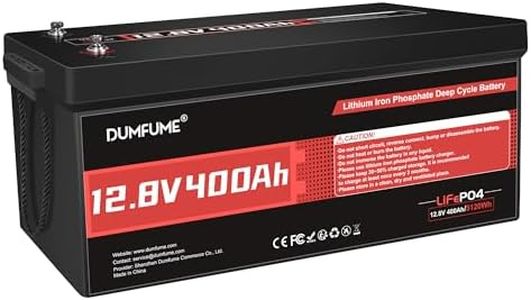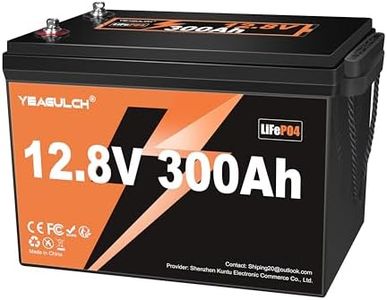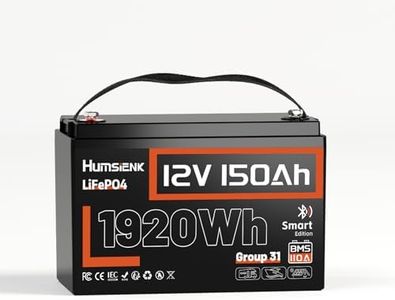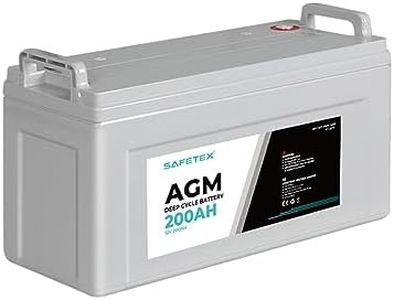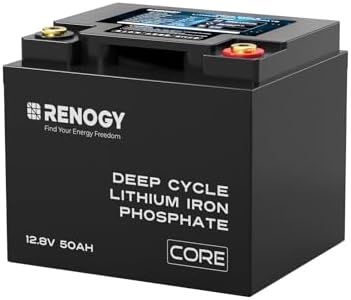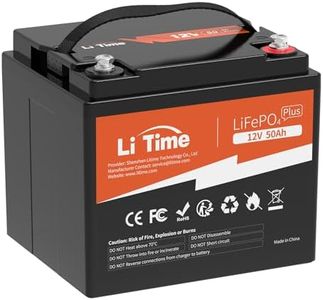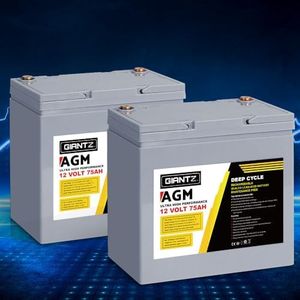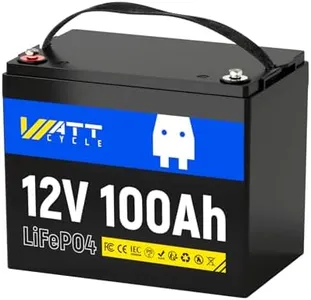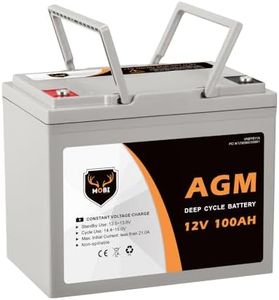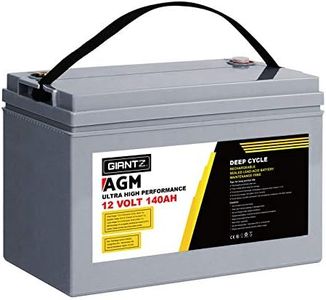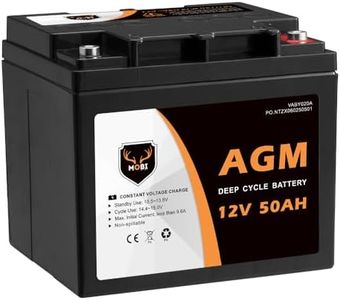We Use CookiesWe use cookies to enhance the security, performance,
functionality and for analytical and promotional activities. By continuing to browse this site you
are agreeing to our privacy policy
10 Best Marine Batteries
From leading brands and best sellers available on the web.Buying Guide for the Best Marine Batteries
Choosing the right marine battery can make a big difference in your boating experience, whether you’re out fishing, cruising, or enjoying water sports. The battery is the heart of your boat’s electrical system, supplying power to start the engine and run all the onboard electronics. When selecting a marine battery, it’s important to understand your boat’s power needs, the kind of use you expect, and the types of batteries available. By paying attention to a few key specifications, you’ll be able to find a battery that fits your needs, lasts longer, and keeps you safe and powered up on the water.Battery TypeThe main types of marine batteries are starting, deep cycle, and dual-purpose batteries. Starting batteries are designed to deliver a quick burst of power to start your boat’s engine, but they aren’t made to provide power for long periods. Deep cycle batteries, on the other hand, are built to provide steady power over longer durations, perfect for running onboard electronics, lights, or trolling motors. Dual-purpose batteries try to combine both functions, but might not excel as much as the dedicated types. Choosing the right type comes down to how you use your boat: if you’re running lots of accessories or a trolling motor, a deep cycle battery is best. For just starting the engine, go with a starting battery. If you want one battery to do both (and your needs are moderate), a dual-purpose battery is worth considering.
Battery Capacity (Amp-Hours, Ah)Battery capacity, measured in amp-hours (Ah), tells you how much energy the battery can store and deliver. A higher Ah rating means the battery can power your boat’s devices for a longer period before needing a recharge. If you have minimal electronics and only use your boat for short trips, a lower capacity (50-70Ah) might be sufficient. For longer outings or if you run equipment such as trolling motors, fish finders, or sound systems, opt for higher capacities (80Ah to 120Ah and beyond). To pick the right one, estimate how many amps your boat’s electrical devices use and multiply by the number of hours you need them to run—this will give you a clear picture of the capacity you need.
Cold Cranking Amps (CCA) / Marine Cranking Amps (MCA)Cold cranking amps (CCA) and marine cranking amps (MCA) are measures of how much power a battery can deliver to start an engine, especially in cold or challenging conditions. CCA is tested at lower temperatures, while MCA is tested at a slightly higher, more marine-relevant temperature. The higher the number, the better the battery is at starting engines, particularly larger or harder-to-start engines in colder conditions. If your boat has a big engine or you operate in cooler climates, look for batteries with higher CCA or MCA ratings. For smaller engines or warm-weather use, you might not need as much cranking power.
Battery Size and GroupThe physical size of a marine battery, often referred to by its 'group size,' matters because it needs to fit securely in your boat’s battery compartment. Battery group sizes are standardized based on the dimensions and terminal placement. Always check your boat’s specifications or measure your battery space before buying. A bigger battery often means more capacity, but only if it fits! Choose a group size that fits your boat’s battery tray and cables, matching the battery’s physical dimensions to your available space.
Maintenance Type (Flooded, AGM, Gel)Marine batteries come in different construction types: flooded lead-acid (standard), AGM (Absorbed Glass Mat), and gel. Flooded batteries are affordable but need regular maintenance, such as topping off water levels. AGM batteries are sealed, spill-proof, vibration-resistant, and require little to no maintenance—making them popular for marine use. Gel batteries are also sealed and tolerate deep discharges and hot environments but tend to be pricier. If you prefer less maintenance and reliable performance, AGM or gel are good choices, especially if your battery is hard to reach. For boats where regular battery care is practical, a flooded battery might suffice.
Cycle LifeCycle life refers to how many charge-and-discharge cycles a battery can handle before its performance starts to degrade. Deep cycle batteries, for instance, are designed to withstand hundreds or even thousands of cycles, making them ideal if you use your boat and its accessories often. If your boat’s battery will be discharged and recharged frequently (as with electric trolling motors), look for a higher cycle life. For occasional or light use, cycle life may be less critical.
